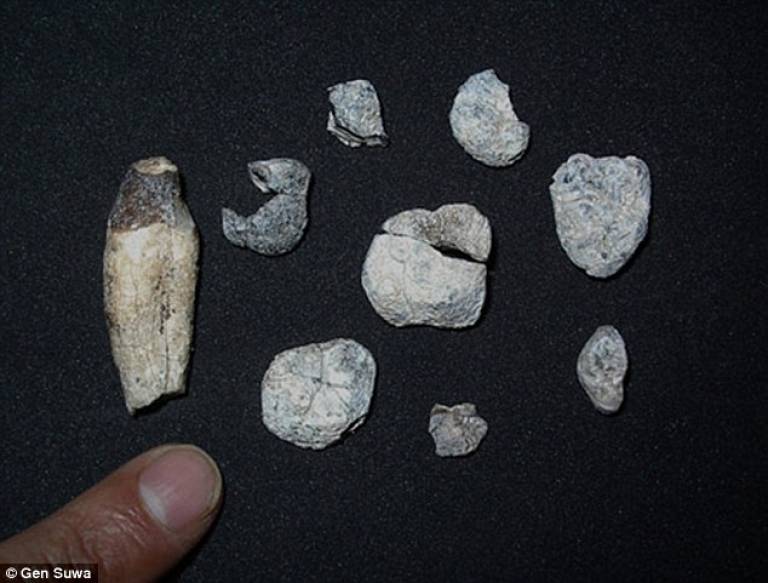New geological and palaeontological age constraint for the gorilla-human lineage split
13 February 2016
The palaeobiological record of 12 million to 7 million years ago (Ma) is crucial to the elucidation of African ape and human origins, but few fossil assemblages of this period have been reported from sub-Saharan Africa.

Since the 1970s, the Chorora Formation, Ethiopia, has been widely considered to contain ~10.5 million year (Myr) old mammalian fossils. More recently,Chororapithecus abyssinicus, a probable primitive member of the gorilla clade, was discovered from the formation. Here we report new field observations and geochemical, magnetostratigraphic and radioisotopic results that securely place the Chorora Formation sediments to between ~9 and ~7 Ma. The C. abyssinicus fossils are ~8.0 Myr old, forming a revised age constraint of the human-gorilla split. Other Chorora fossils range in age from ~8.5 to 7 Ma and comprise the first sub-Saharan mammalian assemblage that spans this period. These fossils suggest indigenous African evolution of multiple mammalian lineages/groups between 10 and 7 Ma, including a possible ancestral-descendent relationship between the ~9.8 Myr old Nakalipithecus nakayamai and C. abyssinicus.
The new chronology and fossils suggest that faunal provinciality between eastern Africa and Eurasia had intensified by ~9 Ma, with decreased faunal interchange thereafter. The Chorora evidence supports the hypothesis of in situ African evolution of the Gorilla-Pan-human clade, and is concordant with the deeper divergence estimates of humans and great apes based on lower mutation rates of ~0.5 × 10−9 per site per year.
New geological and palaeontological age constraint for the gorilla-human lineage split
Shigehiro Katoh , Yonas Beyene, Tetsumaru Itaya, Hironobu Hyodo, Masayuki Hyodo, Koshi Yagi, Chitaro Gouzu, Giday WoldeGabriel, William K. Hart, Stanley H. Ambrose, Hideo Nakaya, Raymond L. Bernor, Jean-Renaud Boisserie, Faysal Bibi, Haruo Saegusa, Tomohiko Sasaki, Katsuhiro Sano, Berhane Asfaw & Gen Suwa
 Close
Close

